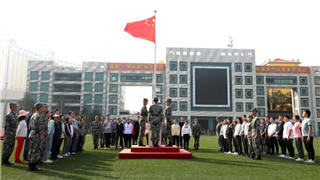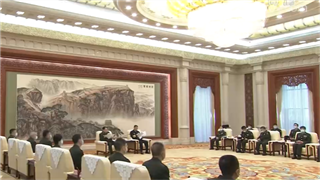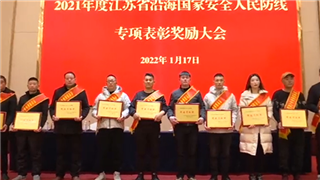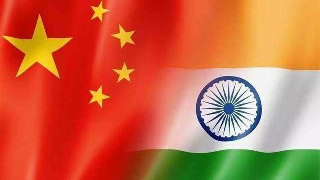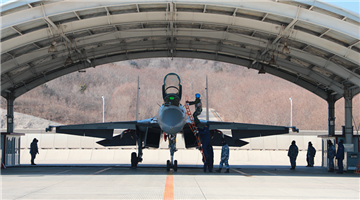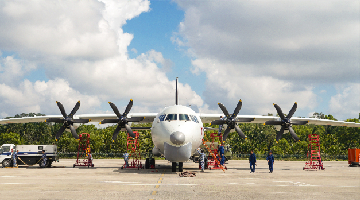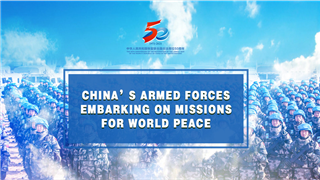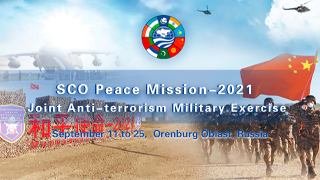By Xiang Haoyu
Japan’s Prime Minister Fumio Kishida had his first meeting with the US President Joe Biden on January 21 through video link, at which the two countries announced to establish an economic version of the “two plus two” mechanism, reaffirmed the importance of the US-Japan alliance, and reiterated the necessity of strengthening their cooperation on creating a “free and open Indo-Pacific”. They also expressed concerns over China’s maritime activities and military buildup, and stressed "the importance of keeping the Taiwan Strait peaceful and stable".
Although both parties seemed to intentionally emphasize their alliance, the subtle signs leaked before the summit made people wonder whether Japan was still in America’s “core circle”.
The Biden administration is deep in hot water now. Internally, it is busy handling inflation and the falling support rate with the nearing mid-term election; externally, it is slammed for the debacle of the withdrawal from Afghanistan, and the AUKUS it signed with Britain and Australia has driven a wedge among the allies. Against such a background, Washington is paying less attention to Japan, and Fumio Kishida’s attempt at an early US trip in his term of office went unanswered. There are comments in Japan pointing out, with much dismay, that the Biden administration still values the “Anglo-Saxon Alliance” most in its global strategy while Japan has been cast to the “second tier”.
On the Japanese side, as the moderates in the Liberal Democratic Party, Prime Minister Fumio Kishida and Foreign Minister Yoshimasa Hayashi want to keep a distance from the Shinzo Abe-led right-wing conservatives both on domestic and foreign policies, and have shown willingness to improve relations with the neighbors. Regarding some sensitive China-related issues, Kishida has basically kept sober-minded and stayed away from China’s red line despite the pressure from the right-wingers.
With the COVID-19 still in the rage and America competing with and suppressing China, the bilateral trade volume between China and Japan has grown, attesting to their closer economic ties. The Regional Comprehensive Economic Partnership(RCEP) coming into effect at the beginning of the new year marked the first free-trade arrangements between China and Japan, which will pump a strong impetus into the economic and trade cooperation between the two countries and across the whole Asia Pacific. Posing a sharp contrast to this is America’s bigoted refusal to re-join the Comprehensive and Progressive Agreement for Trans-Pacific Partnership (CPTPP), and its plan to set up a new “Indo-Pacific economic framework”, which truly disappointed and hurt Japan.
Judging from the current situation, there are at least three factors that are eroding the US-Japan alliance.
The first is the pandemic. Lately clusters of the COVID-19 breakout have been reported across Japan with the daily numbers of new infections hitting new highs constantly, and the source of this surge is American troops stationed in the country, drawing severe criticism of the special status granted to them.
The second is nuclear proliferation. After stepping in office, Kishida has re-approached the initiative for a “nuclear-free world”, pushed for a US-Japan joint statement on the Treaty on the Non-Proliferation of Nuclear Weapons(NPT), called on state leaders to visit Hiroshima and Nagasaki, and tried to ramp up the containment on China and Russia through nuclear disarmament. On the other hand, however, the AUKUS goes in exactly the opposite direction. If the US seeks to cooperate with Japan on nuclear technology for military purposes, that would definitely get on Japan’s anti-nuclear nerve.
The third is the American military base in Japan. Recently the US and Japan have accelerated military deployments in the southwest, and the frequent exercises and training by American troops in Japan have disturbed local residents and increased security risks, fanning up the anti-US-base sentiments in the country. Prodded by the US side, Tokyo has forced the construction of the US military base in Henoko, Okinawa, and bought Mageshima to build a base for American carrier-based aircraft, both triggering intense local objection.
On a deeper level, the subtle changes in the US-Japan relations have their roots in the accelerated shift in the China-US power structure. China has shown incredible resilience and tenacity in face of America’s all-out suppression, and some political elites have come to realize that Japan should look squarely at China’s rise and avoid putting all its bet on the US – it should leave some leeway in their strategic bond and keep the balance between the two major powers.
(The author is a researcher at the Department for Asia-Pacific Studies, China Institute of International Studies)
Editor's note: This article is originally published on huanqiu.com, and is translated from Chinese into English and edited by the China Military Online. The information, ideas or opinions appearing in this article do not necessarily reflect the views of eng.chinamil.com.cn.


